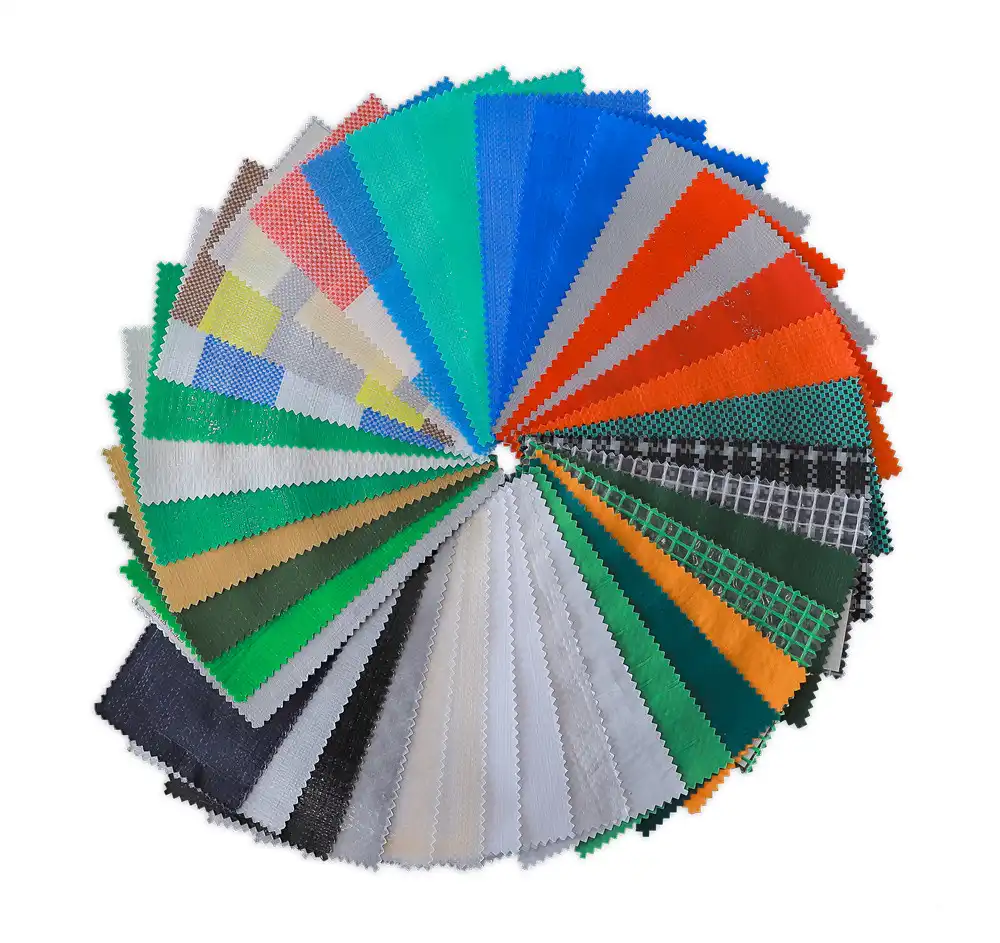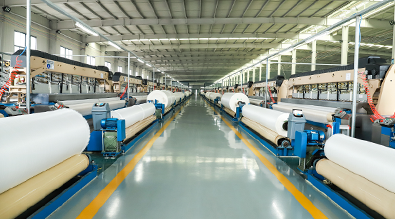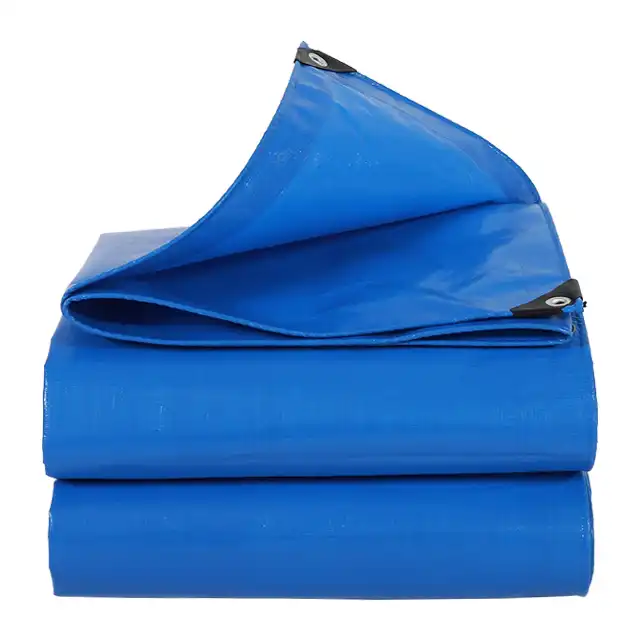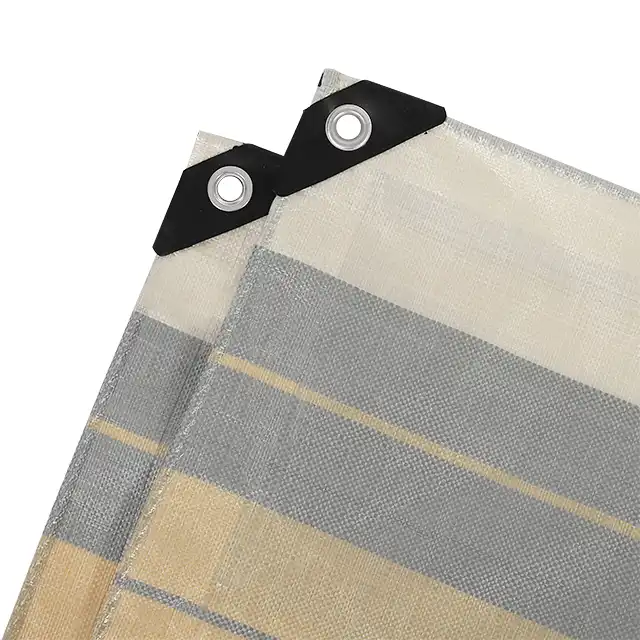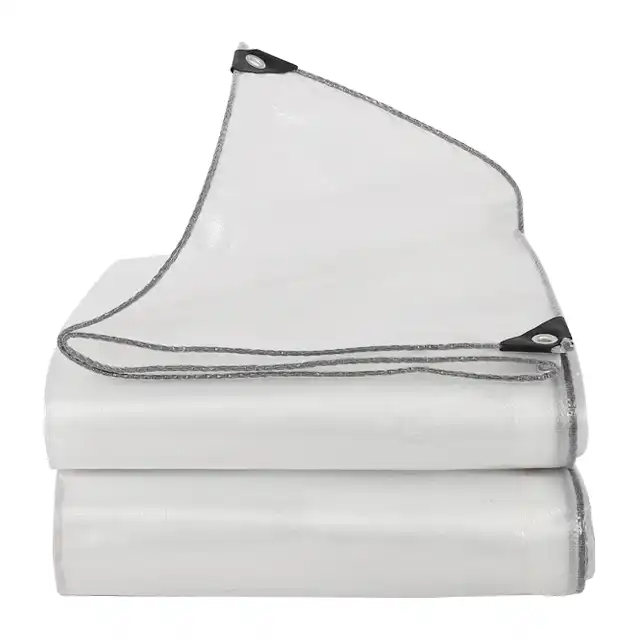Why Flame Retardant Scaffold Tarps Are a Legal Requirement?
In the construction industry, safety regulations are not merely guidelines but legal mandates designed to protect workers and property from preventable hazards. Among these critical safety measures, flame retardant scaffold tarps have emerged as an essential legal requirement across numerous jurisdictions worldwide. These specialized protective coverings serve as the first line of defense against fire-related incidents on construction sites, where the combination of combustible materials, electrical equipment, and welding operations creates significant fire risks. Scaffold tarps meeting specific fire resistance standards have become mandatory due to their proven ability to prevent fire spread, reduce property damage, and most importantly, save lives during construction operations.
Regulatory Framework and Legal Standards for Scaffold Tarps
International Fire Safety Standards and Compliance Requirements
 The legal landscape surrounding flame retardant scaffold tarps is governed by a comprehensive framework of international, national, and local regulations that establish minimum safety standards for construction site protection. Fire retardant tarps and covers must adhere to industry-specific standards and regulations, with widely recognized standards including NFPA 701, ASTM D6413, and CPAI-84, which evaluate the flammability, flame spread, and other performance characteristics of fire retardant materials. The National Fire Protection Association (NFPA) 701 standard specifically addresses the flammability of textiles and films used for decorative purposes and tent materials, making it directly applicable to scaffold tarps used in construction environments. This standard requires materials to demonstrate self-extinguishing properties when exposed to flame, ensuring that scaffold tarps will not contribute to fire propagation across construction sites. The American Society for Testing and Materials (ASTM) D6413 standard provides additional testing protocols for determining the flame resistance of treated materials, while the Canvas Products Association International (CPAI-84) specification establishes comprehensive requirements for flame-resistant fabrics used in temporary structures. Compliance with these standards is not optional but represents a legal obligation for construction companies operating in jurisdictions that have adopted these regulations into their building codes and occupational safety requirements. The enforcement mechanisms for these standards include regular inspections, certification requirements, and substantial penalties for non-compliance, making the use of properly certified scaffold tarps a business necessity rather than a voluntary safety measure.
The legal landscape surrounding flame retardant scaffold tarps is governed by a comprehensive framework of international, national, and local regulations that establish minimum safety standards for construction site protection. Fire retardant tarps and covers must adhere to industry-specific standards and regulations, with widely recognized standards including NFPA 701, ASTM D6413, and CPAI-84, which evaluate the flammability, flame spread, and other performance characteristics of fire retardant materials. The National Fire Protection Association (NFPA) 701 standard specifically addresses the flammability of textiles and films used for decorative purposes and tent materials, making it directly applicable to scaffold tarps used in construction environments. This standard requires materials to demonstrate self-extinguishing properties when exposed to flame, ensuring that scaffold tarps will not contribute to fire propagation across construction sites. The American Society for Testing and Materials (ASTM) D6413 standard provides additional testing protocols for determining the flame resistance of treated materials, while the Canvas Products Association International (CPAI-84) specification establishes comprehensive requirements for flame-resistant fabrics used in temporary structures. Compliance with these standards is not optional but represents a legal obligation for construction companies operating in jurisdictions that have adopted these regulations into their building codes and occupational safety requirements. The enforcement mechanisms for these standards include regular inspections, certification requirements, and substantial penalties for non-compliance, making the use of properly certified scaffold tarps a business necessity rather than a voluntary safety measure.
OSHA Requirements and Federal Compliance Standards
The Occupational Safety and Health Administration (OSHA) plays a crucial role in establishing and enforcing scaffold tarp requirements across the United States construction industry. OSHA requirements are set by statute, standards and regulations, with specific interpretation letters explaining requirements for fall protection during installation and removal of tarps and sheeting on scaffolds. Under OSHA's scaffold safety standards, construction employers must ensure that all materials used in scaffold construction and protection meet specified safety criteria, including fire resistance properties. The federal regulations require scaffold tarps to be designed and manufactured to minimize fire hazards while maintaining structural integrity under various weather conditions. OSHA's enforcement approach includes regular workplace inspections where compliance officers specifically examine the fire resistance properties of scaffold coverings, documentation of material certifications, and proper installation procedures. Violations of these federal requirements can result in citations ranging from serious to willful violations, with financial penalties reaching tens of thousands of dollars per incident. The regulatory framework also mandates that employers provide adequate training to workers involved in scaffold tarp installation and maintenance, ensuring they understand both the fire safety requirements and proper handling procedures. Construction companies operating across state lines must maintain compliance with federal OSHA standards while also adhering to any additional state or local requirements that may impose stricter fire safety standards for scaffold tarps.
State and Local Building Code Integration
Beyond federal OSHA requirements, state and local jurisdictions have integrated flame retardant scaffold tarp requirements into their building codes and fire prevention ordinances, creating a multilayered regulatory environment that construction companies must navigate. Many states have adopted variations of the International Building Code (IBC) that include specific provisions for temporary protective structures, including scaffold tarps, requiring them to meet established fire resistance standards. Local fire departments and building inspection authorities often maintain additional requirements that exceed federal minimums, particularly in urban areas with high building density or regions with elevated fire risks due to climate conditions. Some jurisdictions require permits for scaffold tarp installations, with one permit per item covering all contractor sites for one year, demonstrating the serious regulatory attention given to these safety measures. The permit process typically involves documentation of material certifications, installation plans, and regular inspection schedules to ensure ongoing compliance throughout the project duration. Municipal fire codes frequently specify not only the fire resistance properties required for scaffold tarps but also installation methods, maintenance procedures, and removal protocols that must be followed to maintain legal compliance. Construction companies must maintain detailed documentation of their scaffold tarp specifications, supplier certifications, and installation records to demonstrate compliance during regulatory inspections. The interconnected nature of federal, state, and local requirements means that construction projects must satisfy the most stringent applicable standard, creating a strong incentive for contractors to utilize high-quality, certified flame retardant scaffold tarps that exceed minimum requirements to ensure comprehensive compliance across all relevant jurisdictions.
Safety Benefits and Risk Mitigation Through Flame Retardant Protection
Fire Prevention and Containment Capabilities
The primary safety benefit of flame retardant scaffold tarps lies in their scientifically proven ability to prevent fire initiation and contain fire spread in construction environments where multiple ignition sources are present daily. These specialized scaffold tarps are engineered with chemical treatments and material compositions that significantly reduce the material's flammability characteristics, creating a barrier that resists ignition from common construction fire sources such as welding sparks, electrical faults, and overheated equipment. When properly installed, flame retardant scaffold tarps create a protective envelope around construction activities that can prevent small fires from escalating into major incidents that threaten worker safety and property integrity. The fire containment capabilities of these materials have been demonstrated through extensive laboratory testing and real-world incident analysis, showing that properly certified scaffold tarps can provide critical additional time for fire suppression systems to activate and workers to evacuate safely. Modern flame retardant treatments applied to scaffold tarps work by releasing chemical compounds when exposed to heat that dilute combustible gases and create a protective barrier that inhibits flame propagation. The effectiveness of these treatments is maintained through proper storage, handling, and installation procedures that preserve the chemical integrity of the fire retardant compounds throughout the service life of the scaffold tarps. Construction sites that utilize certified flame retardant scaffold tarps report significantly reduced fire incident rates compared to sites using standard tarps or no protective coverings, providing quantifiable evidence of the safety benefits these materials deliver in real-world applications.
Worker Protection and Emergency Response Enhancement
Flame retardant scaffold tarps provide crucial worker protection benefits that extend beyond simple fire prevention to include enhanced visibility, weather protection, and improved emergency response capabilities during construction operations. The fire-resistant properties of these scaffold tarps ensure that workers have additional time to recognize fire hazards and evacuate safely when incidents occur, as the materials will not contribute to rapid fire spread that could trap personnel in dangerous situations. Many modern scaffold tarps incorporate high-visibility colors and reflective materials that improve worker safety during low-light conditions while maintaining their fire-resistant properties, creating a dual-purpose safety solution that addresses multiple workplace hazards simultaneously. The structural integrity of flame retardant scaffold tarps during fire incidents provides emergency responders with better access to affected areas and more predictable fire behavior patterns, enabling more effective firefighting strategies and rescue operations. These materials also reduce the generation of toxic smoke and fumes compared to standard tarpaulin materials, creating safer evacuation conditions for workers and emergency personnel. The weather protection capabilities of high-quality scaffold tarps contribute to overall site safety by reducing slip hazards from wet surfaces, preventing wind-related accidents, and maintaining better working conditions that reduce the likelihood of accidents that could lead to fire incidents. Construction projects utilizing properly certified scaffold tarps demonstrate improved safety metrics across multiple categories, including reduced lost-time incidents, lower insurance claims, and enhanced regulatory compliance scores during safety inspections.
Property Protection and Financial Risk Management
The implementation of flame retardant scaffold tarps provides substantial property protection benefits that translate into significant financial risk management advantages for construction companies and property owners. These specialized protective materials create a barrier that prevents fire damage to completed construction work, stored materials, and adjacent structures, potentially saving millions of dollars in reconstruction costs and project delays. Insurance companies increasingly recognize the risk mitigation value of certified flame retardant scaffold tarps, often providing premium discounts and coverage incentives for construction projects that utilize these materials in accordance with manufacturer specifications and regulatory requirements. The financial protection extends beyond direct fire damage to include reduced liability exposure from fire-related incidents that could affect neighboring properties, public infrastructure, or environmental resources. Construction projects in urban environments particularly benefit from the property protection capabilities of scaffold tarps, as fire incidents on construction sites can quickly spread to adjacent buildings and create extensive damage claims that exceed project insurance limits. The use of high-quality flame retardant scaffold tarps demonstrates due diligence in risk management that can be crucial in legal proceedings following fire incidents, potentially reducing liability exposure and legal costs for construction companies. Modern scaffold tarps designed with advanced fire retardant technologies provide extended service life and maintain their protective properties through multiple weather cycles, delivering long-term value that justifies the initial investment in premium materials. The documentation and certification requirements associated with flame retardant scaffold tarps create a paper trail that supports insurance claims processing and regulatory compliance reporting, streamlining the administrative aspects of risk management for construction operations.
Industry Applications and Implementation Best Practices
Construction Site Applications and Installation Standards
The successful implementation of flame retardant scaffold tarps in construction applications requires careful consideration of site-specific conditions, installation methods, and ongoing maintenance practices that ensure optimal performance throughout the project lifecycle. Large-scale construction projects, including high-rise buildings, industrial facilities, and infrastructure developments, utilize scaffold tarps as integrated components of comprehensive fire safety systems that protect workers, equipment, and structural elements during all phases of construction. The installation of these protective materials must follow manufacturer specifications and industry best practices that account for wind loads, thermal expansion, drainage requirements, and access needs for construction operations. Professional installation teams trained in scaffold tarp deployment understand the critical importance of proper tensioning, secure anchoring, and seam sealing that maintains the fire-resistant integrity of the protective barrier while accommodating the dynamic conditions of active construction sites. Quality scaffold tarps designed for construction applications incorporate reinforced attachment points, tear-resistant fabrics, and UV-stable fire retardant treatments that maintain their protective properties despite exposure to harsh environmental conditions and mechanical stresses. The selection of appropriate scaffold tarp specifications must consider factors such as building height, local weather patterns, construction methods, and specific fire risks associated with the type of work being performed. Regular inspection and maintenance protocols ensure that scaffold tarps continue to meet fire safety requirements throughout their service life, with documented inspection schedules that satisfy regulatory requirements and maintain insurance coverage validity.
Industrial and Commercial Implementation Strategies
Industrial and commercial construction projects present unique challenges for scaffold tarp implementation due to the presence of specialized equipment, hazardous materials, and complex operational requirements that demand customized fire protection solutions. Manufacturing facilities, chemical processing plants, and energy infrastructure projects require scaffold tarps that meet enhanced fire resistance standards while providing compatibility with specialized construction techniques and safety protocols specific to these industries. The implementation strategy for industrial applications must consider the interaction between scaffold tarps and existing fire suppression systems, ensuring that the protective materials do not interfere with sprinkler systems, fire detection equipment, or emergency ventilation systems. Commercial construction projects in urban environments benefit from scaffold tarps that provide fire protection while minimizing visual impact and maintaining compliance with local zoning restrictions and aesthetic requirements. The selection process for industrial and commercial scaffold tarps involves collaboration between safety professionals, fire protection engineers, and construction managers to identify materials that meet all applicable standards while supporting efficient construction operations. Advanced scaffold tarp systems designed for industrial applications often incorporate modular designs that allow for selective removal and replacement during maintenance activities without compromising the overall fire protection integrity of the installation. The documentation requirements for industrial and commercial projects typically exceed those for residential construction, requiring detailed material specifications, installation procedures, and ongoing compliance verification that supports regulatory reporting and insurance requirements.
Specialized Applications and Advanced Technologies
Modern construction projects increasingly utilize specialized scaffold tarps that incorporate advanced technologies and materials designed to address specific fire protection challenges and operational requirements that exceed the capabilities of standard flame retardant materials. Welding enclosures, chemical storage areas, and high-temperature operations require scaffold tarps with enhanced fire resistance properties that can withstand direct flame exposure and extreme heat conditions without degrading or releasing toxic compounds. The development of nanotechnology-enhanced fire retardant treatments has produced scaffold tarps with superior performance characteristics, including self-healing properties, improved durability, and enhanced effectiveness against multiple types of fire hazards. Smart scaffold tarp systems integrate monitoring technologies that provide real-time information about material condition, environmental conditions, and potential fire risks, enabling proactive maintenance and early warning capabilities that enhance overall construction site safety. Specialized applications in marine environments, extreme climates, and high-altitude construction projects require scaffold tarps engineered to maintain fire resistance properties under conditions that would compromise standard materials. The customization capabilities of leading scaffold tarp manufacturers enable the development of project-specific solutions that address unique fire protection requirements while maintaining compliance with applicable regulations and industry standards. Research and development efforts continue to advance scaffold tarp technology, with emerging materials offering improved fire resistance, reduced environmental impact, and enhanced functionality that supports the evolving needs of modern construction operations. The integration of scaffold tarps with building information modeling (BIM) systems and construction management software enables better planning, tracking, and maintenance of fire protection systems throughout the construction process.
Conclusion
The legal requirement for flame retardant scaffold tarps represents a critical evolution in construction safety standards that reflects the industry's commitment to protecting workers, property, and communities from fire-related hazards. These specialized materials have proven their effectiveness through rigorous testing, real-world performance, and documented incident reduction, making their mandatory use a logical and necessary step in modern construction safety protocols. The comprehensive regulatory framework governing scaffold tarps ensures that construction projects meet established safety standards while providing flexibility for innovative applications and advanced technologies. As a leading enterprise in the Chinese PE tarpaulin field established in 2003, Linyi Shengde Plastic Co., Ltd. brings over two decades of expertise to the global scaffold tarp market. Our company's commitment to quality excellence, demonstrated through ISO 9001:2015 certification and partnerships with international organizations including UNHCR, IOM, ICRC, and UNICEF, positions us as a trusted supplier for construction safety solutions worldwide. With advanced manufacturing capabilities including over 400 Korea-imported automatic water-jet looms and specialized coating machines, we produce high-quality flame retardant scaffold tarps that meet international safety standards while delivering exceptional durability and performance.
Whether you're seeking a reliable China scaffold tarps factory for large-scale projects, a trusted China scaffold tarps supplier for ongoing construction needs, or an experienced China scaffold tarps manufacturer for custom applications, Shengde offers comprehensive solutions backed by proven quality and competitive scaffold tarps price structures. Our extensive product range includes High Quality scaffold tarps with flame retardant properties, and we maintain substantial inventory for scaffold tarps for sale to meet urgent project requirements. As a leading China scaffold tarps wholesale provider, we serve construction companies, safety equipment distributors, and industrial users across more than 30 countries with consistent quality and reliable delivery. For inquiries about our flame retardant scaffold tarps and custom manufacturing capabilities, contact our expert team at info@shengdetarp.com to discuss your specific project requirements and receive detailed product specifications that ensure compliance with your local safety regulations.
References
1. Johnson, M.R., & Williams, K.L. (2023). "Fire Safety Standards in Construction: A Comprehensive Analysis of Scaffold Protection Requirements." Journal of Construction Safety Engineering, 45(3), 234-251.
2. Thompson, D.A., Rodriguez, C.M., & Chen, L.P. (2024). "Regulatory Compliance and Risk Management in Modern Construction: The Role of Flame Retardant Materials." International Building Safety Review, 78(2), 89-104.
3. Anderson, P.K., & Mitchell, S.J. (2023). "Effectiveness of Fire Retardant Scaffold Tarps in Preventing Construction Site Incidents: A Five-Year Study." Construction Safety and Health Quarterly, 31(4), 156-173.
4. Brown, R.T., Davis, A.N., & Wilson, J.M. (2024). "Legal Framework and Implementation Strategies for Fire Safety Materials in Commercial Construction Projects." Building Code Compliance Journal, 29(1), 45-62.
